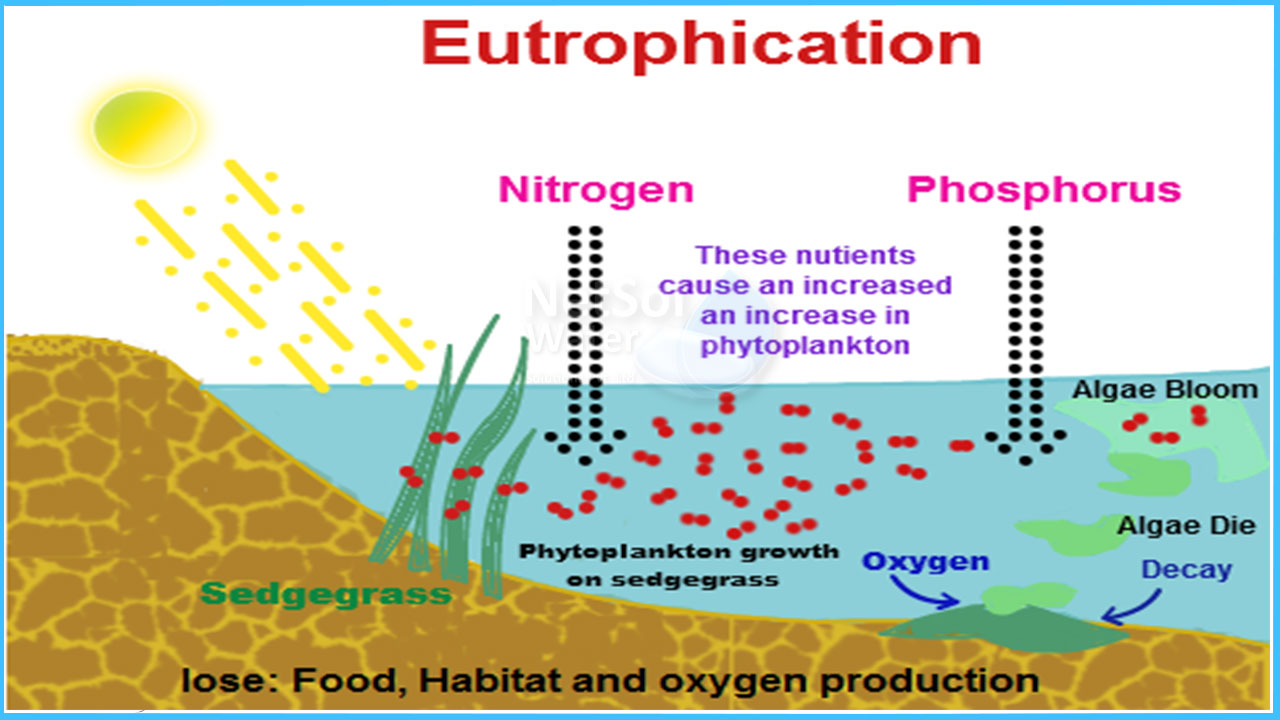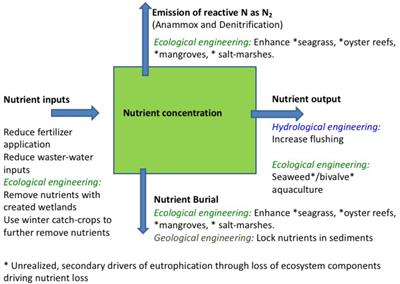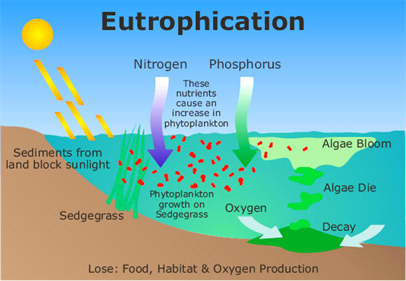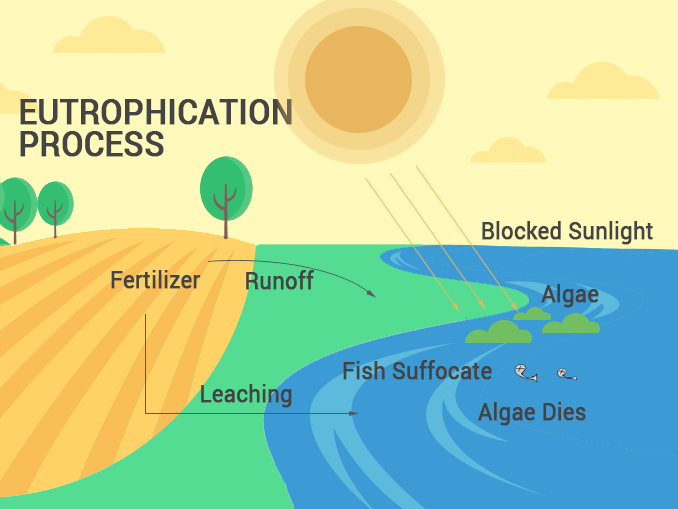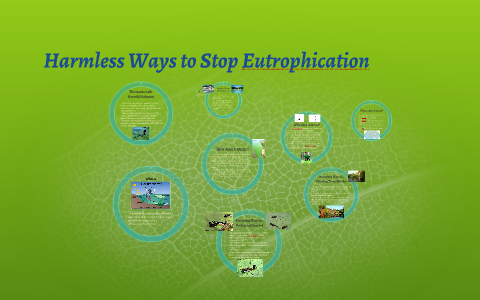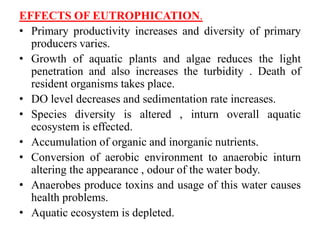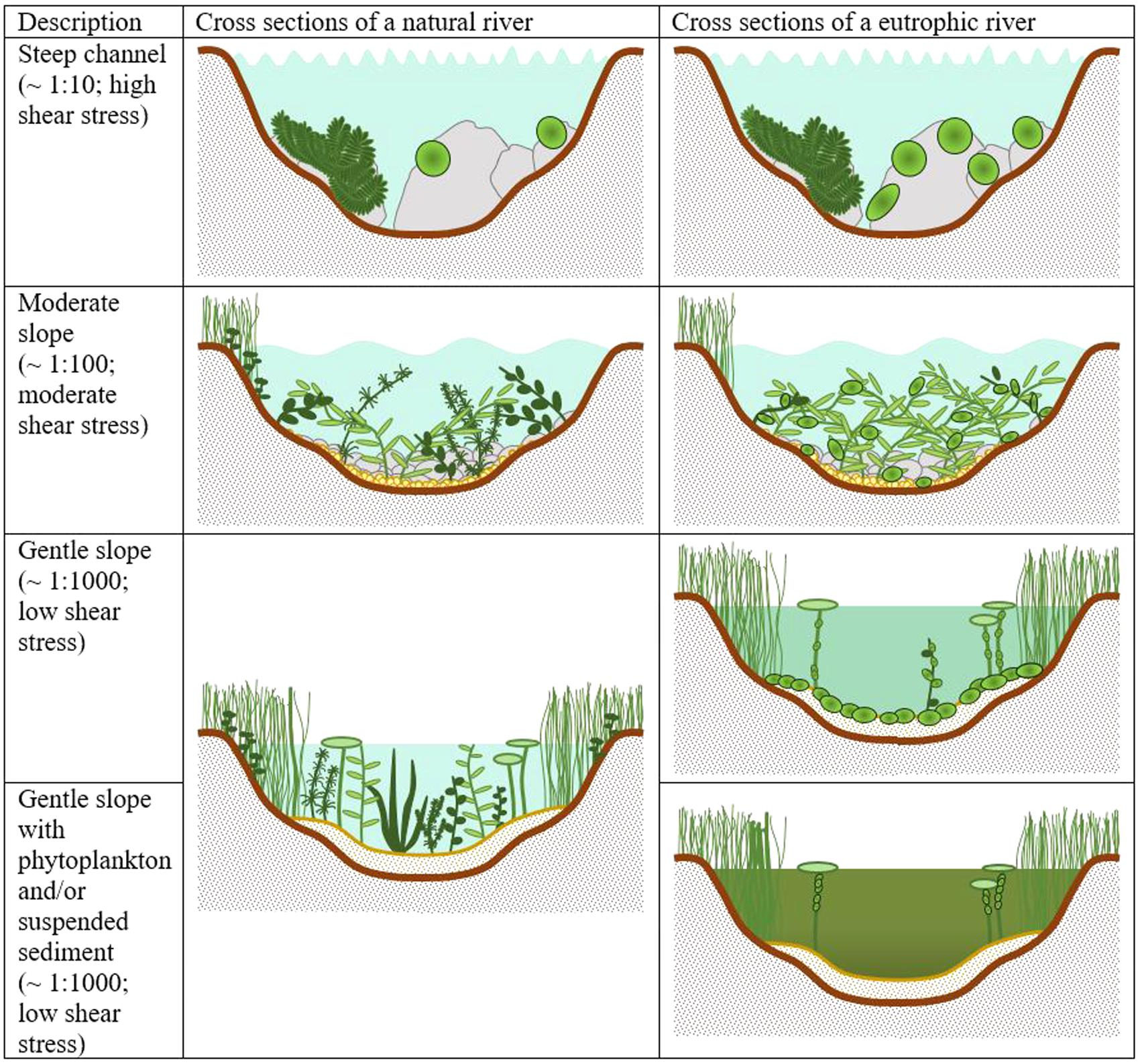Painstaking Lessons Of Info About How To Control Eutrophication

All of the essential elements in compost fertiliser are broken down and synthesised by the.
How to control eutrophication. In the past three decades, the. Reduce the source of nutrients (e.g. Since industrial agriculture is the main causative agent of eutrophication, i think that approaches to mitigate/reduce nitrate and phosphorus pollution in fresh water should be the following:
For most pollutants, limits are based on conditions in the immediate receiving water. Waste water like sewage must be properly treated before discharging it into water bodies. First farmers apply fertilizer to the soil.
In order to limit the process of eutrophication following steps can be considered: In order to control eutrophication first you need to identify the sources. Eutrophication occurs when excessive nutrients build up in waterways such as rivers, lakes, and streams.
Accelerated eutrophication, which is harmful and difficult to repair, is one of the most obvious and pervasive water pollution problems in the world. Eutrophication occurs in 4 simple steps: There are two possible approaches to reducing eutrophication:
(a) harvesting of the plants. Background waters and p nitrogen and phosphorus together support the growth of algae and aquatic plants, which. There are two general methods which seem to offer the great est chance of success.
Next the fertilizer rich in nitrate and phosphate spark the overgrowth of. Once algal blooms die and decompose, they must be removed from the water. This involves control of phosphorous and other chemicals which favour eutrophication before entering water bodies.
